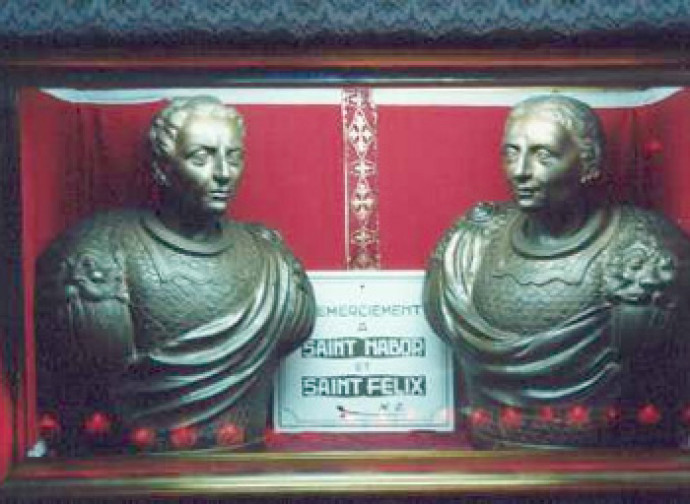Saints Nabor and Felix
Saints Nabor and Felix (†303) were two Berber soldiers who embraced the Christian faith after their arrival in Italy and suffered martyrdom under Diocletian. Saint Ambrose (340-397) extolled their virtues in the hymn Victor, Nabor, Felix pii, also dedicated to Saint Victor, their comrade-in-arms commemorated on 8 May.

Saints Nabor and Felix (†303) were two Berber soldiers who embraced the Christian faith after their arrival in Italy and suffered martyrdom under Diocletian. Saint Ambrose (340-397) extolled their virtues in the hymn Victor, Nabor, Felix pii, also dedicated to Saint Victor, their comrade-in-arms commemorated on 8 May. Other information on the two martyrs celebrated today can be found in a Passio dating to after the time of the holy bishop of Milan.
Nabor and Felix, like Victor, also came from the Roman province of Mauretania (not to be confused with the present state of Mauritania), in North Africa. Their conversion to Christianity had taken place in Milan, where Maximian, the Western Augustus and a friend of Diocletian, had established his capital. The two emperors, at the beginning of the Great Persecution (303-305), commanded the purge of the army. Then Nabor, Felix and Victor - not wanting to deny the true God they had recently discovered and by whom they had been intimately renewed - deserted. All three were captured and sentenced to beheading.
Nabor and Felix were executed at Laus Pompeia, today's Lodi Vecchio, where there was a large Christian community. Their bodies were recovered by Saint Savina, who then secretly moved them to Milan. Here Saint Maternus provided to bury them with dignity. When the persecutions ended and the beautiful early Christian basilicas began to be built, the relics of the two martyrs were placed inside the basilica called “Naboriana”. In front of the gates of this church, thanks to an excavation ordered by Saint Ambrose, on 17June 386 the bodies of Saints Gervasius and Protasius were found and were moved the next day to the Basilica Martyrum (today the Basilica of Saint Ambrose).
In the 13th century the Basilica Naboriana was granted to the Franciscans, who renovated and enlarged it until it was incorporated into the new church of San Francesco Grande. Over the centuries the latter became the second largest church in Milan, surpassed only by the Duomo. Before its demolition (in 1806) it housed authentic masterpieces, commissioned by the friars, such as the Virgin of the Rocks by Leonardo da Vinci.




